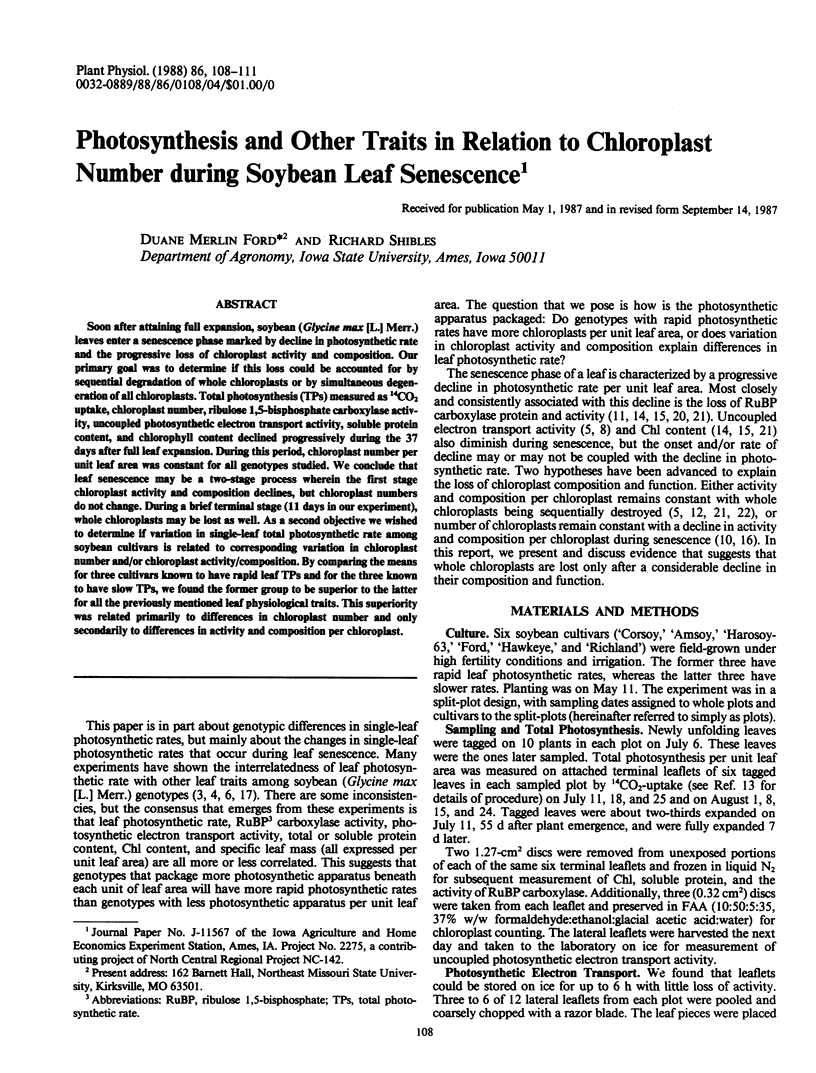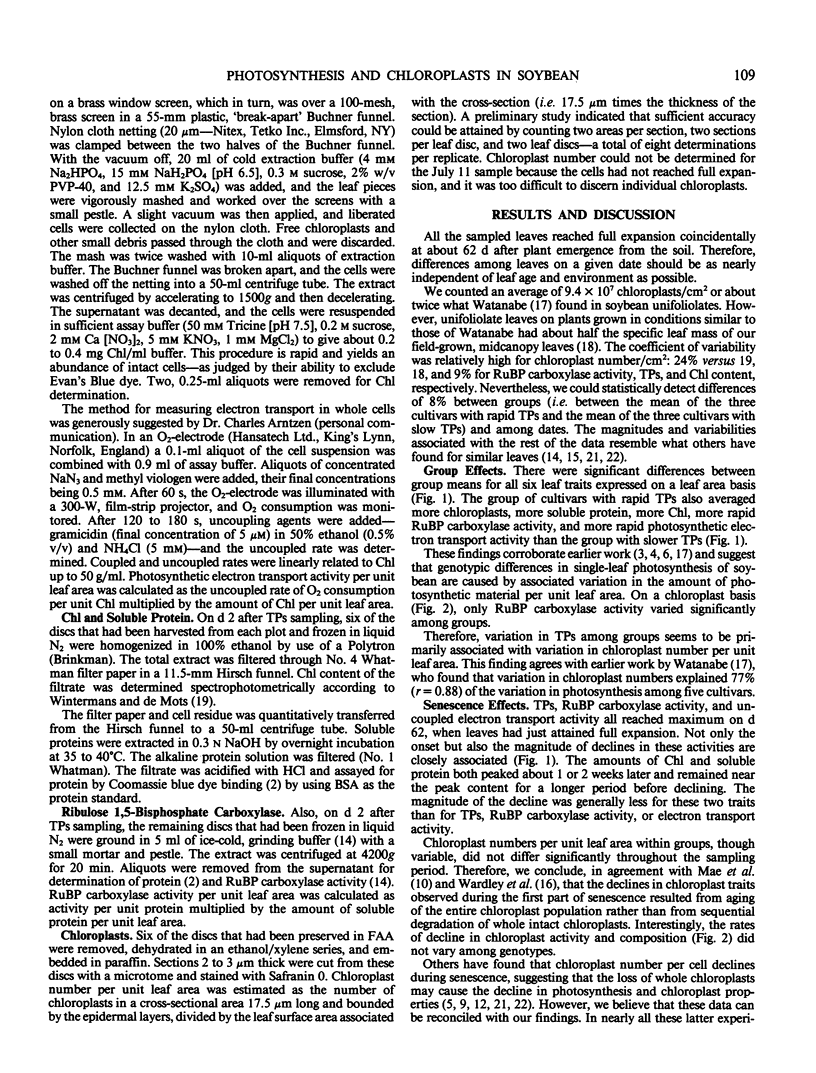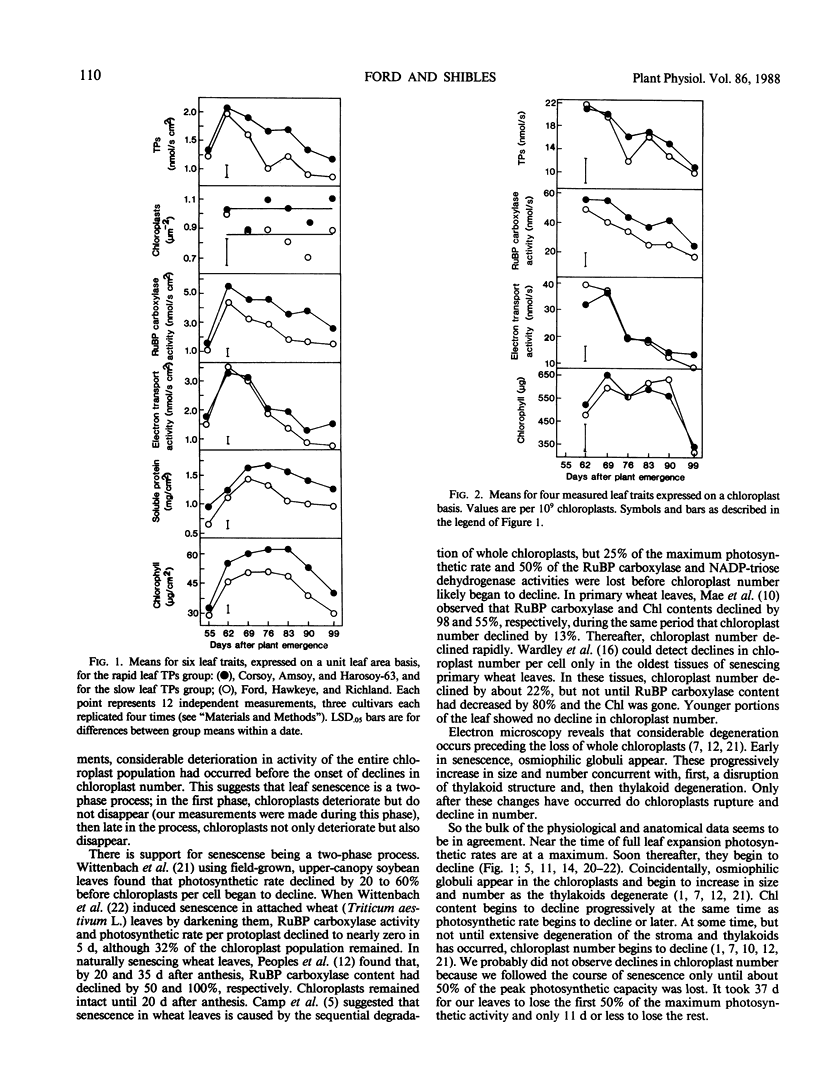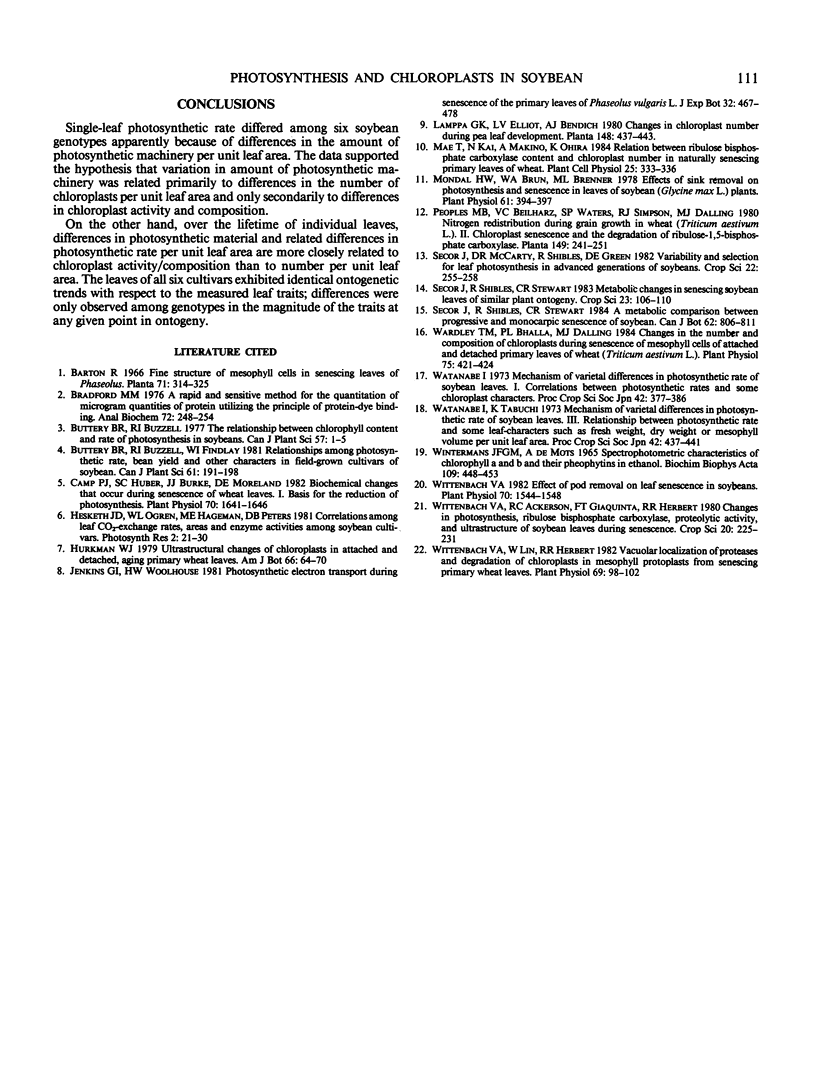Abstract
Soon after attaining full expansion, soybean (Glycine max [L.] Merr.) leaves enter a senescence phase marked by decline in photosynthetic rate and the progressive loss of chloroplast activity and composition. Our primary goal was to determine if this loss could be accounted for by sequential degradation of whole chloroplasts or by simultaneous degeneration of all chloroplasts. Total photosynthesis (TPs) measured as 14CO2 uptake, chloroplast number, ribulose 1,5-bisphosphate carboxylase activity, uncoupled photosynthetic electron transport activity, soluble protein content, and chlorophyll content declined progressively during the 37 days after full leaf expansion. During this period, chloroplast number per unit leaf area was constant for all genotypes studied. We conclude that leaf senescence may be a two-stage process wherein the first stage chloroplast activity and composition declines, but chloroplast numbers do not change. During a brief terminal stage (11 days in our experiment), whole chloroplasts may be lost as well. As a second objective we wished to determine if variation in single-leaf total photosynthetic rate among soybean cultivars is related to corresponding variation in chloroplast number and/or chloroplast activity/composition. By comparing the means for three cultivars known to have rapid leaf TPs and for the three known to have slow TPs, we found the former group to be superior to the latter for all the previously mentioned leaf physiological traits. This superiority was related primarily to differences in chloroplast number and only secondarily to differences in activity and composition per chloroplast.
Full text
PDF



Selected References
These references are in PubMed. This may not be the complete list of references from this article.
- Bradford M. M. A rapid and sensitive method for the quantitation of microgram quantities of protein utilizing the principle of protein-dye binding. Anal Biochem. 1976 May 7;72:248–254. doi: 10.1006/abio.1976.9999. [DOI] [PubMed] [Google Scholar]
- Camp P. J., Huber S. C., Burke J. J., Moreland D. E. Biochemical Changes that Occur during Senescence of Wheat Leaves : I. Basis for the Reduction of Photosynthesis. Plant Physiol. 1982 Dec;70(6):1641–1646. doi: 10.1104/pp.70.6.1641. [DOI] [PMC free article] [PubMed] [Google Scholar]
- Mondal M. H., Brun W. A., Brenner M. L. Effects of Sink Removal on Photosynthesis and Senescence in Leaves of Soybean (Glycine max L.) Plants. Plant Physiol. 1978 Mar;61(3):394–397. doi: 10.1104/pp.61.3.394. [DOI] [PMC free article] [PubMed] [Google Scholar]
- Wardley T. M., Bhalla P. L., Dalling M. J. Changes in the Number and Composition of Chloroplasts during Senescence of Mesophyll Cells of Attached and Detached Primary Leaves of Wheat (Triticum aestivum L.). Plant Physiol. 1984 Jun;75(2):421–424. doi: 10.1104/pp.75.2.421. [DOI] [PMC free article] [PubMed] [Google Scholar]
- Wintermans J. F., de Mots A. Spectrophotometric characteristics of chlorophylls a and b and their pheophytins in ethanol. Biochim Biophys Acta. 1965 Nov 29;109(2):448–453. doi: 10.1016/0926-6585(65)90170-6. [DOI] [PubMed] [Google Scholar]
- Wittenbach V. A. Effect of pod removal on leaf senescence in soybeans. Plant Physiol. 1982 Nov;70(5):1544–1548. doi: 10.1104/pp.70.5.1544. [DOI] [PMC free article] [PubMed] [Google Scholar]
- Wittenbach V. A., Lin W., Hebert R. R. Vacuolar localization of proteases and degradation of chloroplasts in mesophyll protoplasts from senescing primary wheat leaves. Plant Physiol. 1982 Jan;69(1):98–102. doi: 10.1104/pp.69.1.98. [DOI] [PMC free article] [PubMed] [Google Scholar]


